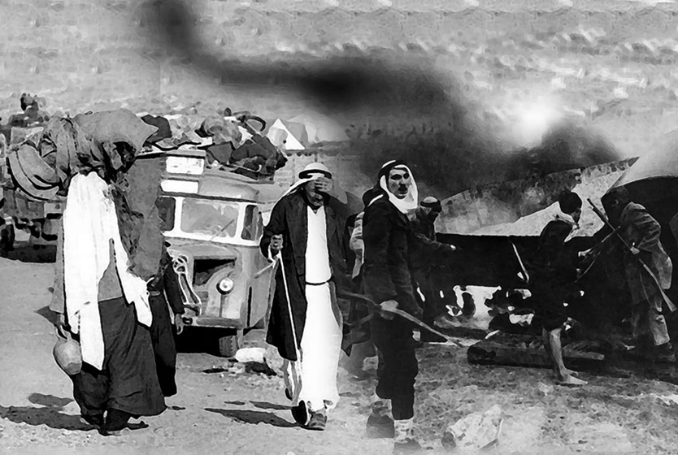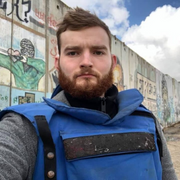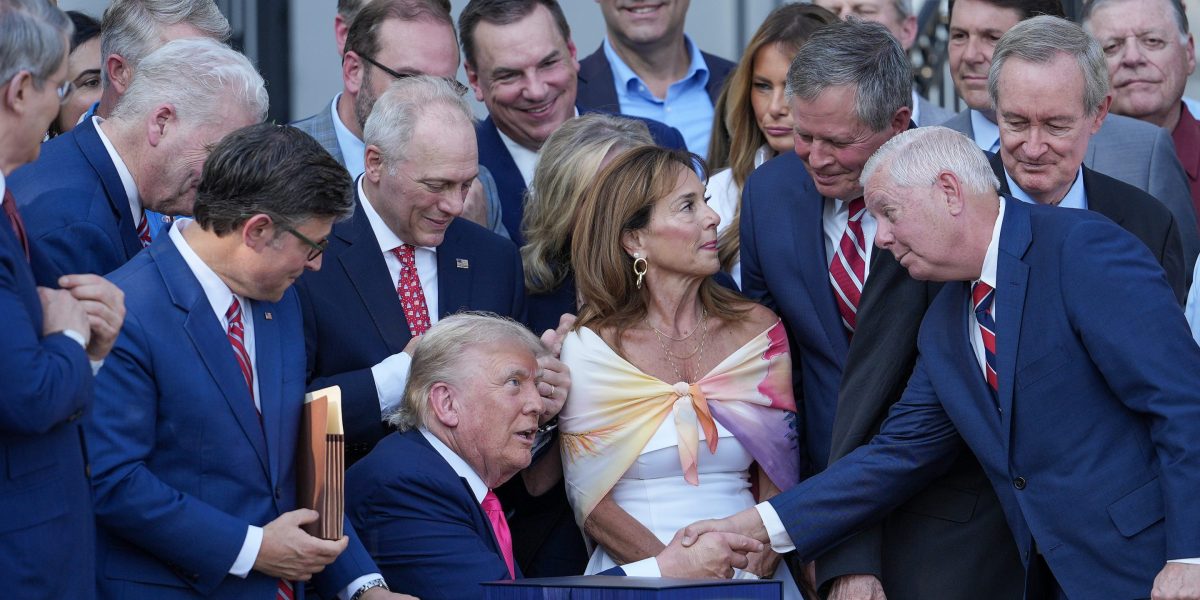

The Nakba never ended, and it is a 77-year-long campaign to destroy the Palestinian people. This is Israel, a foreign genocidal experiment aimed at completely annihilating an indigenous people.
When we think about the Nakba, or ethnic cleansing of Palestine, we often focus on 1948 alone. Nowadays, some will link the events that have transpired since October 7, 2023, to this horrendous historical crime. Yet, for the majority refugee population of Gaza, the Nakba never ended.
In a way, the Gaza Strip is the embodiment of what the Nakba truly was and is. It is a small territory that was born of the Nakba. Although Gaza City has existed for thousands of years, the territory we call the Gaza Strip today has only been around for 77 years.
In 2022, I interviewed two Nakba survivors. One was Nazmiya Abdelfattah Khalil Mezher, who was expelled from her village of Khulda in 1948, and Mariam Shaheen, who was forced to flee the village of Zakariya. Although both were old at that time and often had to repeat themselves, a common theme that they equally focused on were the cases of rape, torture and mass murder.
Nazmiya even said that her father decided to stay behind in the village of Khulda, while she, her mother, and siblings fled to the unknown and were eventually aided by the United Nations. She recalled an argument that broke out when her father sought to remain in their village, where her mother argued that they should leave to avoid a massacre like the one that occurred in Deir Yassin.
Both Nazmiya and Mariam spoke about the rape of women in Deir Yassin, during the infamous massacre that occurred there when Zionist militia forces murdered at least 107 Palestinian civilians. In total, around 15,000 Palestinians were killed during the ethnic cleansing, and over 750,000 were forced out of their lands.
Why do I focus on the interviews with Nazmiya and Mariam? Because they tell a story of the tactics used throughout the past 77 years by the Zionist forces against Palestinians. These common themes of sexual violence, murder of civilians as a means of intimidation and torture tactics to inflict humiliation have always been weaponized to push hundreds of thousands of people to flee their homes. Year in, year out, it is the same story, except on different scales.
On a more personal note, the interviews with these Nakba survivors struck a particular chord when I listened back to them for the sake of this piece, because they bore a striking similarity to the daily conversations I have with my own family members from Gaza.
Often, I struggle to hold back tears when my mother-in-law speaks of Gaza. When she describes the streets she grew up in, the murals on the walls, the view of the sea, the best bayara in the area, the trees, fruits, and animals, even her relatives who have since passed away, she does so often as if it is all still there.
“In Gaza we have…” is often the beginning of an hour-long conversation as she describes a drink she used to have when the weather got hot, a desert during Ramadan, or a certain kind of fruit tree in the backyard where she grew up. The descriptions paint a vivid picture and give you a glimpse of the memories she holds.
Yet, in the back of my mind, the thought always lingers, what she is describing is forever gone, bombed and purged from existence. Although I know that one day it will be rebuilt and the land will return to its rightful owners, I can’t help but feel the injustice that has been inflicted.
Sometimes my wife will break down into tears and tell me that she can remember the smells of Gaza from when she was a child, that her dreams take her back to the home where her grandfather lived. All of these memories and smells wedged into her brain, but now linger as somewhat of a scar, given that things will never be the same.
And they are not originally from Gaza, they are refugees, with their families having been expelled from their villages in 1948, destined to live only a few dozen kilometers away from that land to which they belonged for generations, yet forbidden to return, all as settlers from around the world build new American styled housing next to the ruins of what once was.
What is the difference between the Nakba of 1947-9 and the Nakba of today? Is this not a mass ethic cleansing, using the threats of mass slaughter, rape and torture as a weapon against civilians in order to force them to flee? Maybe the scale on which the Nakba is being committed is today grander, but the wounds are all the same.
Yet, the Nakba is not just a number of people expelled or murdered, it is the deletion of memories, it is the dismantlement of all that is familiar. It leaves its victims with only the smells, sensations, and images left in their minds to replace the physical existence of the places they were raised.
What the Nakba does is make it so that the hospital you were born in, the street you grew up in, the first time you tried your favourite meal, the venue of your wedding, are all locations at which a horrendous atrocity occurred.
‘They Never Stopped, Do You Think They Changed?’
Speaking to the Palestine Chronicle on the condition of anonymity, out of fear for her remaining family members, a woman from the Jabaliya Refugee Camp recounted what life was like in the 1970s and early 80s in the coastal territory. Keep in mind that this was before the existence of Hamas and the Islamic resistance groups. Before the Oslo Accords – signed between the PLO and Israel between 1993-5 – the Gaza Strip was under full Israeli military control.
“When we grew up, we weren’t allowed to build our houses high; all these tall buildings are new, because whenever we would build before Oslo, the occupation would need to approve a permit,” she explained. Also noting that in the 1970s the entire east side of the Jabalia refugee camp was subjected to demolition orders, “they just ordered the people to leave and destroyed it”.
She also told the Palestine Chronicle that the occupation forces would routinely come and shoot dead random civilians, including family members. Once they took a child to their military checkpoint and beat him so severely that when they dumped his body off in the refugee camp later that day, the skin peeled off of his body when his family members attempted to take his bloody shirt off.
At this time, any national symbols or photos of Palestinian leaders like Yasser Arafat would cause you to be arrested, even children. Also, at a moment’s notice, the Israelis could just decide, for “security reasons,” to occupy a house, or demolish one.
In 1949, cases of atrocities against Palestinian civilians began emerging from the Gaza Strip, including in early August of that year, when reports emerged that Israeli soldiers kidnapped two Palestinian refugees, murdering the man and then taking turns at raping the woman before executing her. The very next year, another two cases emerged of Palestinians being kidnapped and raped, before being shot dead at the demarcation zone surrounding Gaza.
77 Years of Dispossession — Everything You Need to Know about the Nakba
In addition to these horrifying cases of sexual violence, Palestinians attempting to return to their original villages nearby were shot dead and treated as “infiltrators” by the newly established Zionist regime. Through 1952 and 1953, there were frequent raids into Gaza, killing dozens of Palestinians each time. During the period described as the “border wars” years, thousands were killed.
In 1967, Israel occupied all of Palestine, the Syrian Golan Heights, and Egyptian Sinai, expelling another 350,000 people from their lands. Prior to that time, Egypt maintained a rule over Gaz,a and Israeli forces did not leave the Egyptians alone either. In 1955, Israel raided an Egyptian military camp, killing 36 soldiers along with two Palestinian civilians.
In response to years of Israeli assaults on civilians in Gaza, later in August of 1955, a group of Palestinian resistance fighters broke across the separation barrier and attacked Israeli soldiers and settlers. The assault killed 5 soldiers and 10 Israeli settlers.
As Joseph Massad wrote in a piece for the Middle East Eye, in December of 2023, Israeli PM Benjamin Netanyahu was not the first of Israel’s leaders to invoke the “Amalek” reference to justify the slaughter of civilians in Gaza.
In fact, when Israel attacked Egypt and Gaza in 1956, its first Prime Minister, David Ben Gurio,n justified the attack by proclaiming that “hosts of Amalek” were attempting to destroy the Israeli State. On top of a range of other atrocities, Israeli forces rounded up and shot dead up to 500 Palestinians in Gaza, committing a mass execution of mainly civilians.
Keep in mind that all of the above-mentioned atrocities occurred well before October 7, 2023, and are in no way anomalies. The demolition of homes, expulsion orders, executions, bombings, sexual violence and kidnappings have all been used as tactics by the Israeli regime since its inception.
Simply pick a year in the history of the conflict, and there is a horrifying atrocity that was committed against Palestinians. In the case of Gaza specifically, it is the embodiment of what the Nakba looks like, because the vast majority of its people are refugees, packed into a densely populated area, all with dreams of returning to their lands from Haifa down to the Naqab.
Yet, the Zionist entity never let them live, not even just in Gaza, it had to continually aggress against them, expel them from their homes time and time again, dehumanise them and is now attempting to exterminate so many of them that they simply give up and try to leave. The Nakba never ended, and it is a 77-year-long campaign to destroy the Palestinian people. This is Israel, a foreign genocidal experiment aimed at completely annihilating an indigenous people.
(The Palestine Chronicle)

– Robert Inlakesh is a journalist, writer, and documentary filmmaker. He focuses on the Middle East, specializing in Palestine. He contributed this article to The Palestine Chronicle.








